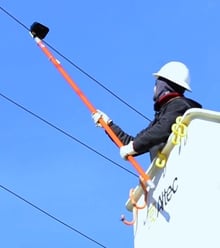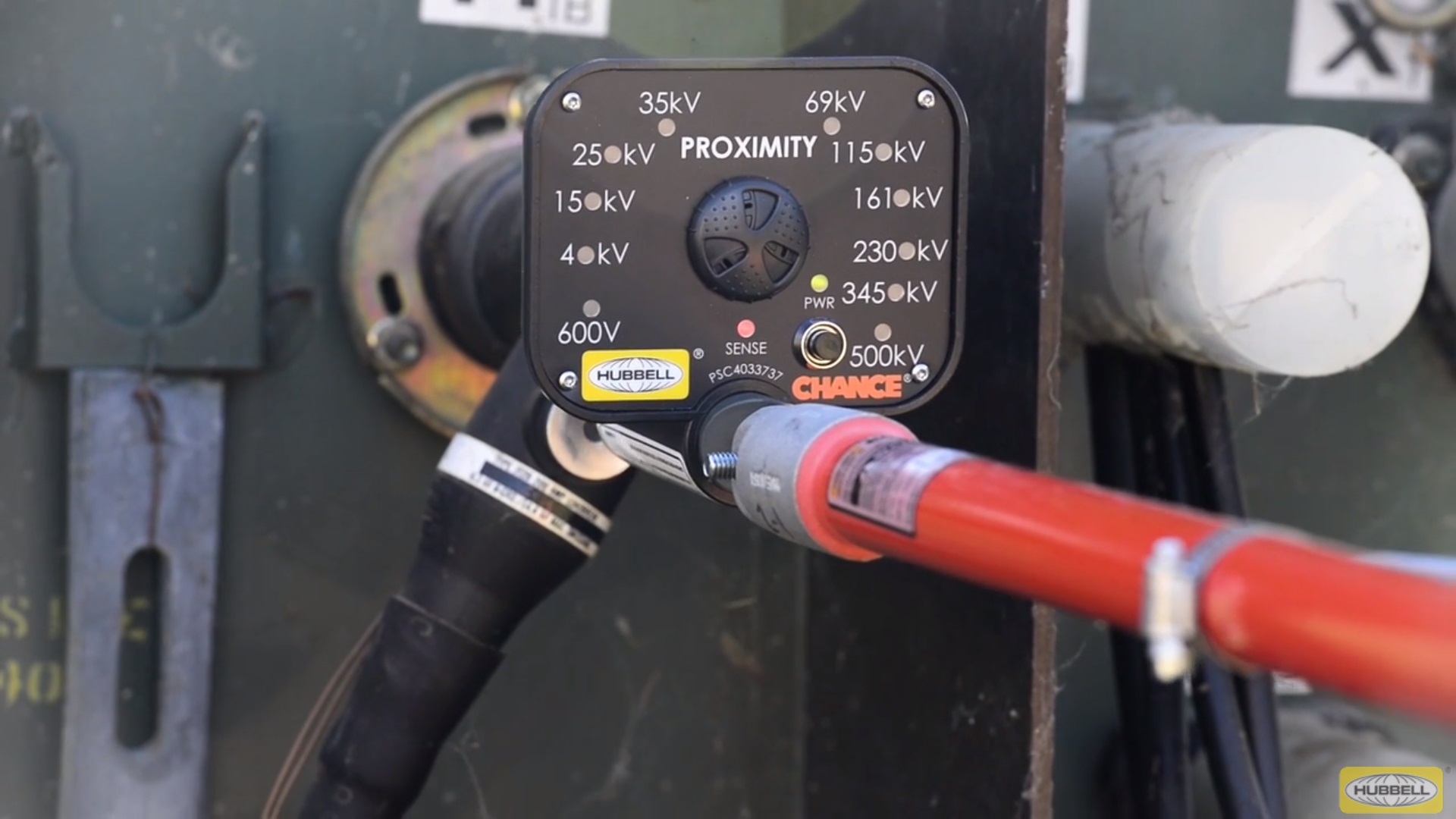
In many cases, a line worker is faced with several daily tasks which require them to use a single-point-of-contact voltage detector. With a variety of options on the market, knowing which type to use for a project can be challenging. Hubbell Power Systems' CHANCE® Tools brand offers a wide variety of voltage detectors. When using a voltage detector, it is critical to always use a proper length hotstick that complies with company and OSHA-mandated minimum approach distances (MAD). Rubber insulating gloves should never be used as the only form of PPE when using a voltage detector.
Voltage detectors are field intensity meters and a line worker’s body or any energized component can affect the reading of the voltage. The best location to take a voltage reading is far from interference, midspan if possible. There are a variety of indicator-testers offered by HPS to verify that the unit is working properly, prior to and after use. If an indicator-tester is not available, the meter should be tested using a known voltage source.
Multi-Range Voltage Detector (MRVD)
The MRVD is a direct contact voltage detector with an analog needle gauge. CHANCE® Multi-Range Voltage Detectors always display phase-to-phase voltage regardless of whether a liner worker is working a single-, double- or three-phase circuit. This detector can be used on overhead lines, underground lines on a capacitive test point, or with the use of a bushing or elbow adapter.
The various MRVD units have a switch on the top of the meter that is used to select the correct voltage range. This unit is equipped with its own built-in tester to ensure the unit is working properly before and after use. The simplicity of needle movement to detect voltage on lines make these units classic and highly favorable among many line crews.
Auto-Ranging Voltage Indicator (ARVI)
Another simple-to-use voltage meter that doesn’t require a selector is the ARVI. This meter is a direct-contact voltage detector that includes a series of LED lights to indicate the approximate voltage class of the detected voltage. If desired, the unit has the ability to hold a reading until it is reset, produce an audible chirp when taking a reading, and set an automatic sleep function after 15 minutes of non-use. The detector can be used on overhead lines, underground lines on a capacitive test point, or with the use of a bushing or elbow adapter. Learn more about the ARVI by watching this video:
Multi-Range Voltage Indicator (MRVI)
The MRVI is a new direct contact voltage detector with a brightly lit LED analog needle gauge. This contact voltage detector utilizes stepper motor technology which eliminates the need for a selector switch. The detector can be used on overhead lines, underground lines on a capacitive test point, or with the use of a bushing or elbow adapter.
Additionally, the unit is equipped with Bluetooth® connectivity to display the meter reading (analog and digital) on your smart watch and Bluetooth-enabled device. Multiple Bluetooth-enabled devices can be connected to one MRVI at a time. The app is available for download on both the Google Play and Apple App Store.
Lastly, the meter displays the phase-to-ground voltage in addition to the phase-to-phase voltage. The MRVI is a great choice to use where other employees want to see the voltage on the line or for training purposes. It can also be used to verify the voltage condition before placing temporary protective grounds on the line. To learn more, watch this video:
Proximity Voltage Indictor (PVI)
A proximity voltage indictor, similar to the ARVI, contains a series of LED lights that indicate the approximate voltage class of the detected voltage. It can be used on overhead lines and capacitive test points. The lower ranges of the unit can be turned off by holding the power button and cycling through the LEDs of various voltage classes. The PVI is durable and can come into accidental brush contact with energized components without damaging the meter. This meter is useful for customers who do not allow energized lines to be touched until it has been verified that they are de-energized. Our PVI video explains how to operate this meter:
Summary
Hubbell Power Systems offers a wide variety of voltage detectors for line crews. Request more information about Lineman Tools Training for your team. Please make sure to always follow your company’s work practices and procedures. If you have any additional questions regarding CHANCE voltage detectors, please reach out to your local Hubbell Utility Solutions Territory Manager.

